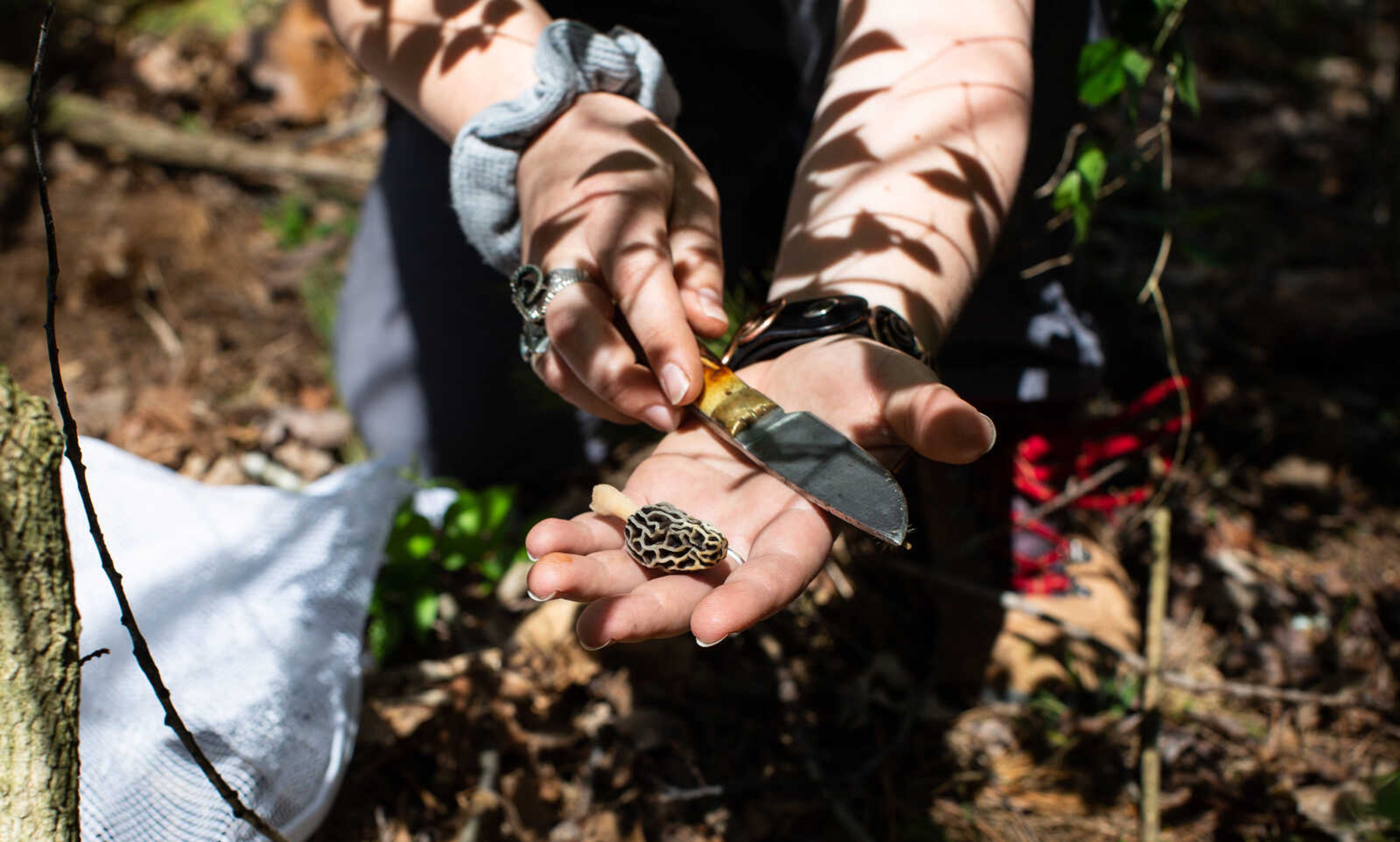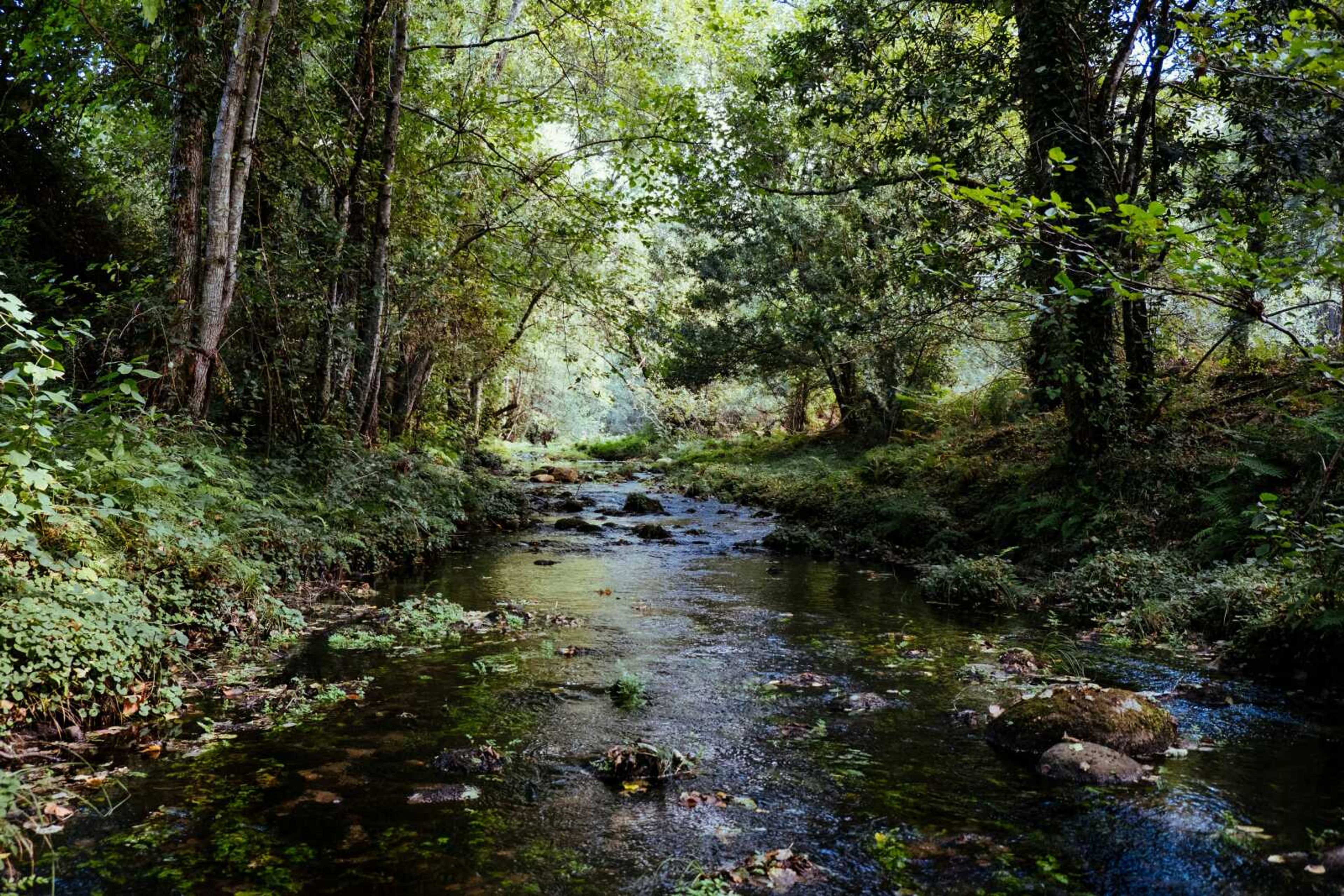The Thrill of the Hunt: Foraging morels in Southeast Missouri
Don’t ask a morel hunter where they hunt. In Southeast Missouri, morels fruit for approximately five weeks, from late March to early May. The mushrooms are popular because of the short window of time they are available in, they have fewer poisonous mushroom look-alikes than other foragable fungi and, quite simply, they are delicious. So, the territory where foragers find their morels is top-secret, and people go to great lengths to ensure others don’t find “their spot.”...
Don’t ask a morel hunter where they hunt.
In Southeast Missouri, morels fruit for approximately five weeks, from late March to early May. The mushrooms are popular because of the short window of time they are available in, they have fewer poisonous mushroom look-alikes than other foragable fungi and, quite simply, they are delicious. So, the territory where foragers find their morels is top-secret, and people go to great lengths to ensure others don’t find “their spot.”
It’s part of the culture of morel hunting: morel hunter Anna Mae Zembsch says if others know about her spots, they might get to the morels before she can. And besides not wanting her spots to get cleaned out before she gets there, it’s important to leave some morels behind, she says, so they can spore out and create more morels.
“It’s the first sign of spring,” Zembsch says of morel hunting. “It’s my favorite time of year. … And [morels] just look so cool.”
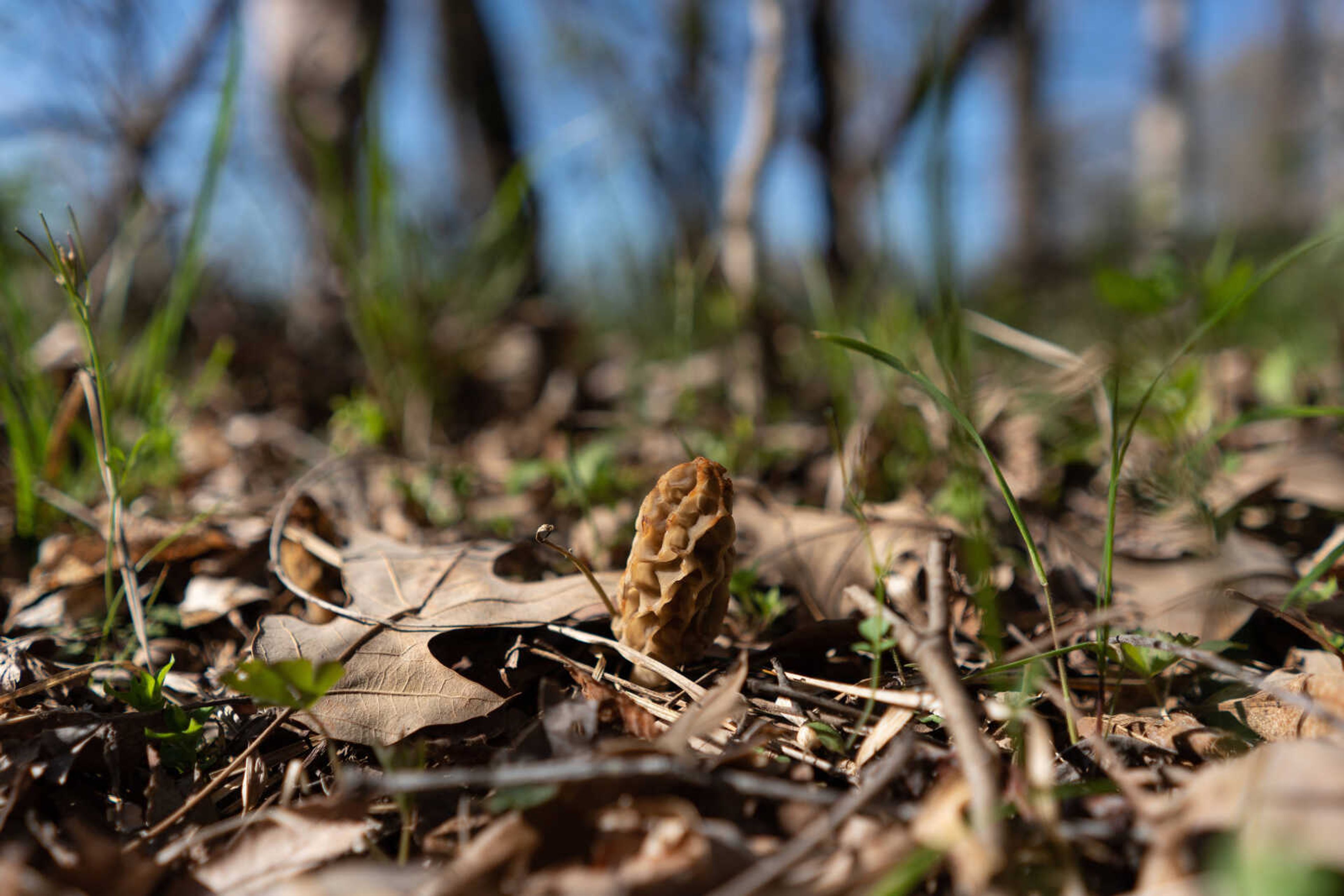
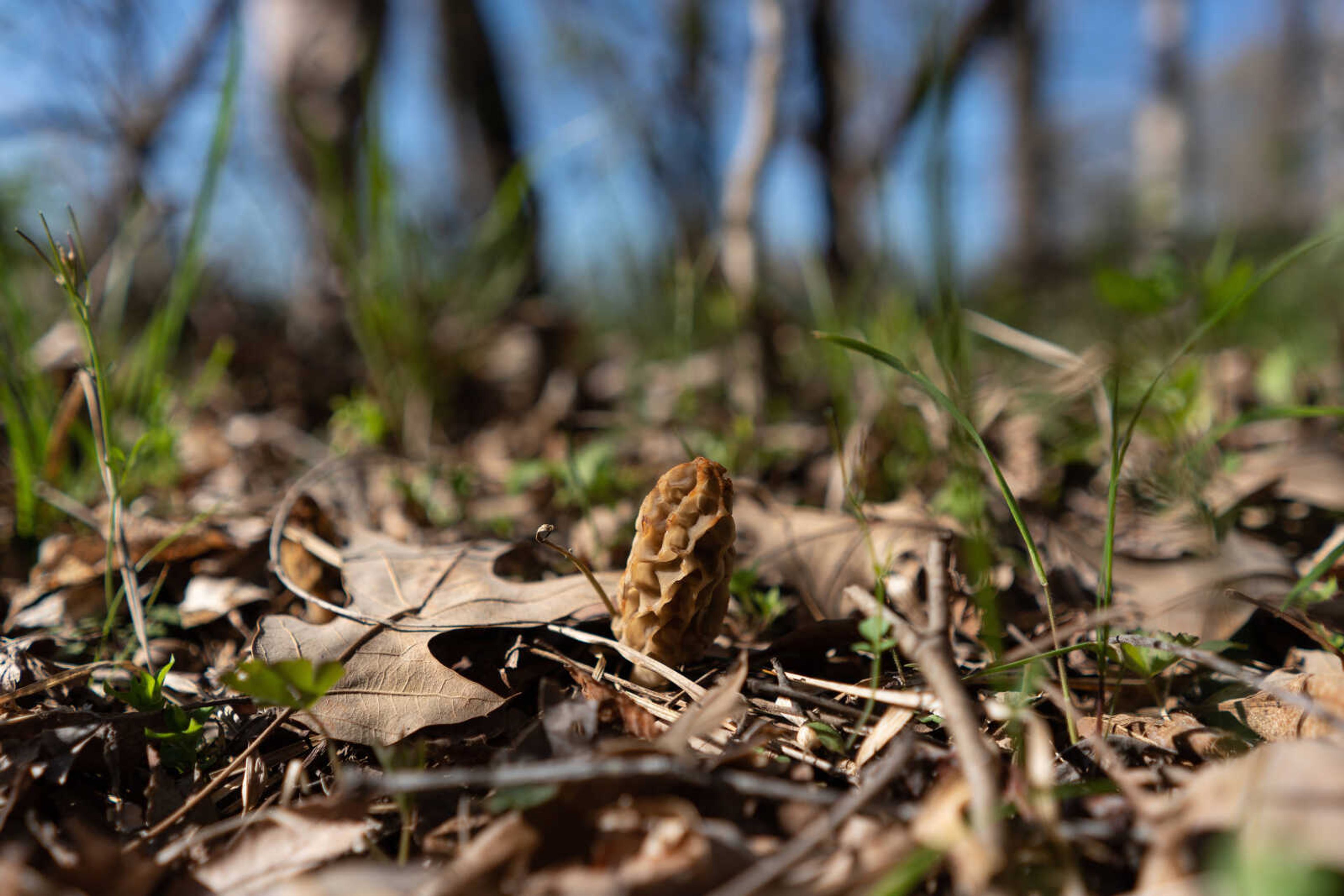
__What are morels?__
Zembsch is right: Morels are interesting organisms composed of a conical-shaped cap that has pits and ridges; in black and yellow morels, the cap is attached to the stem. In half-free morels, the bottom half of the cap “hangs free from the stalk,” according to the Missouri Department of Conservation’s website. All true morels are hollow inside.
In Missouri, there are three types of morel mushrooms: The half-free morel appears first, with the black morel next and then the yellow or “blonde” morel that appears a bit later in the season. The organisms are interesting: According to the Missouri Department of Conservation’s website, below ground, the mycelia or vegetative part of the fungus create a network of fine white filaments. The morels are part of a symbiotic relationship with the roots of trees, living on dead and decaying organic matter, decomposing dead leaves and wood to return the nutrients to the soil.
When weather conditions are right — moist spring weather, daytime temperatures in the low 70s and nighttime temperatures in the 50s — the mycelia fruit, producing the mushroom above ground, which facilitates reproduction through releasing tiny spores that, when they land in a place that allows for their growth, germinate and develop fine filaments that become new mycelia.
This, according to the Outdoor Life story “12 Tips for Finding More Morel Mushrooms this Spring,” by Gary Garth and Matt Every, is why morels can often be found around dead and decaying trees: The trees are the mycelia’s food source, so when they are gone, the mycelia must reproduce in order to survive.
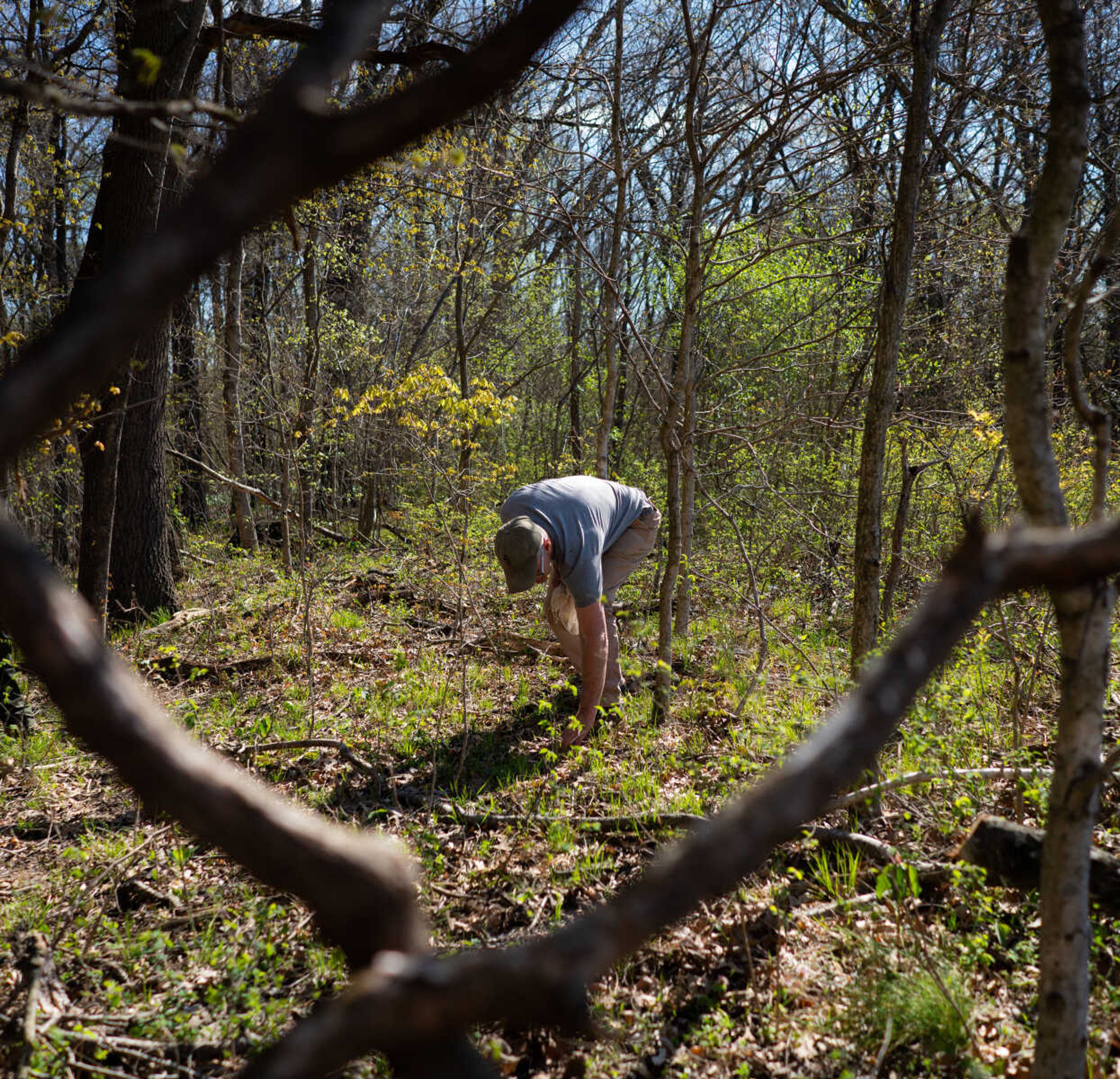
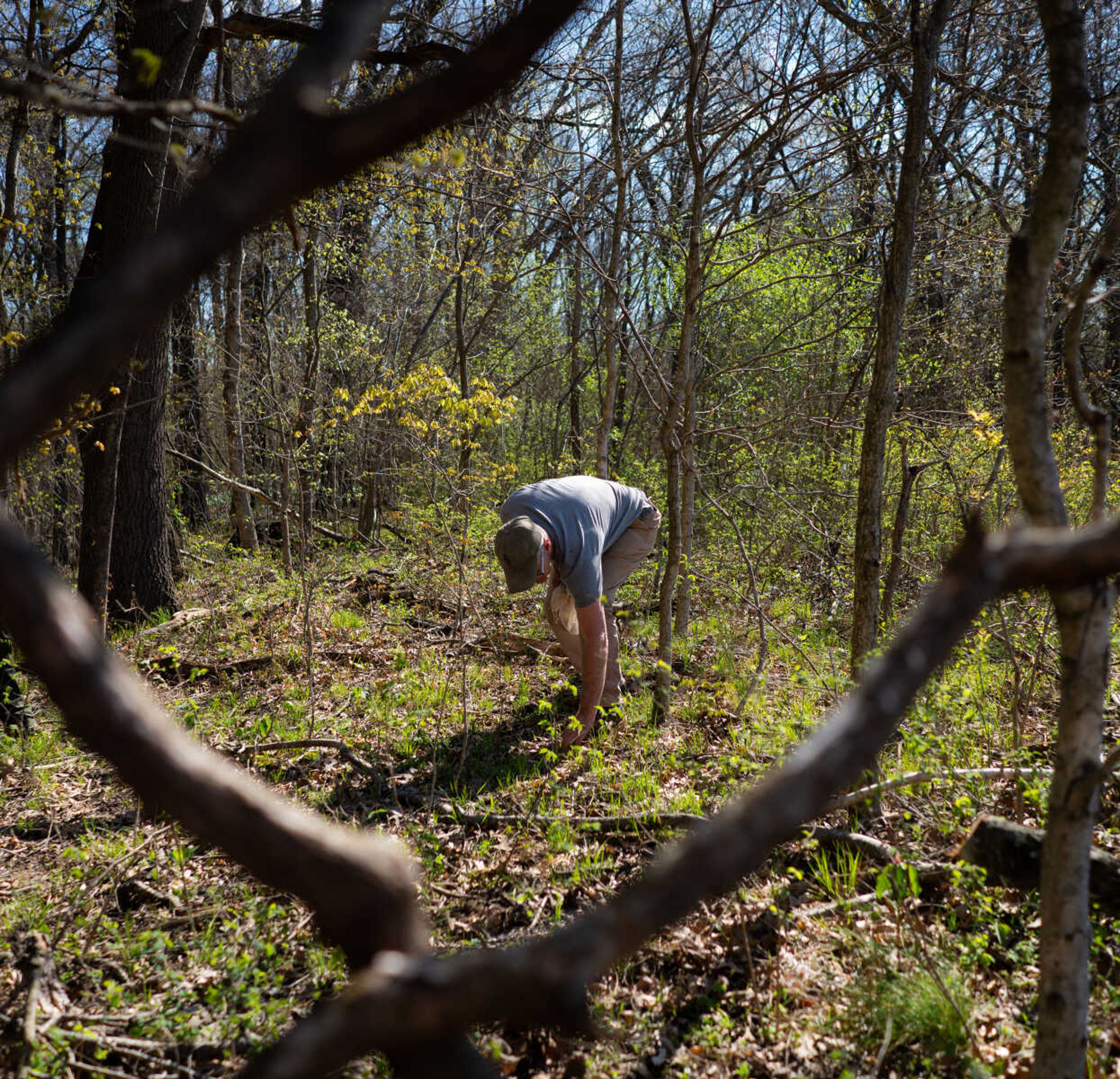
__How to hunt morels__
Jefferson Fox began morel hunting approximately five years ago and says he got really serious about it during the COVID-19 pandemic. Now, he goes at least every other day during the month of April and in early May. A turkey hunter, he sometimes combines his trips to the woods, turkey hunting for part of the day and morel hunting for the other part.
“I just love being out in the woods,” Fox says. “This is really just another excuse to be outside. … The cool thing about being out here is, [nature] never changes. It never gets political or worked up about anything.”
When morel hunting, Fox says to look around elm, ash and cottonwood trees, especially ones that are recently dead or decaying; morels can often be found in a 15- to 25-foot radius around the dying indicator tree. Areas that have been disturbed by flood, fire or logging are also promising spots, as are southern and westward-facing slopes early in the season, and northern and eastern-facing slopes later on, according to the Missouri Department of Conservation’s website.
Fox says looking near creeks, wherever ferns are unfurling and by roads that have been disturbed by roadwork are also good places to find morels; kneeling closer to the ground can help spot them. Any time one is around, there are likely more, he says.
Fox pinches morels off with his fingers; Zembsch uses a knife. Regardless of the method used to pick the morel, some of the mushroom’s stalk should be left in the ground, so morels can emerge in that location again, Zembsch says. She uses a mesh laundry bag to put her morels in once she’s harvested them; this way, spores can fall from the morels to the ground as she’s walking, spreading to other areas.
It’s important to have the same gear you have for hiking when you’re morel hunting, Zembsch says, including bug spray, water, long pants and hiking boots. Don’t litter. Don’t hunt for morels in places where people are turkey hunting, since the seasons coincide. And always check for ticks when you’re finished.
When foraging on public property, Zembsch says it’s important to know the rules of the park or conservation area where you’re at to ensure you’re foraging legally. And of course, make sure you have permission to forage from the property owner if you are going on private property.
Many aspects of morel hunting are subjective, and each forager has their own mix of preferences and practices. For example, Fox says he likes to hunt for morels at golden hour in the morning or evening because the light is best to see morels then; Zembsch, on the other hand, says cloudy days are the best days to look.
Part of the process is serendipitous. Fox says one year, he hunted “really hard” and didn’t find anything; he decided to go fishing. When he got out of his truck at a parking lot by a paved road, there on the other side of the road was a patch of morels.
“Stumbling around is a pretty good method,” he jokes. “And just walk around in circles like you don’t know what you’re doing.”
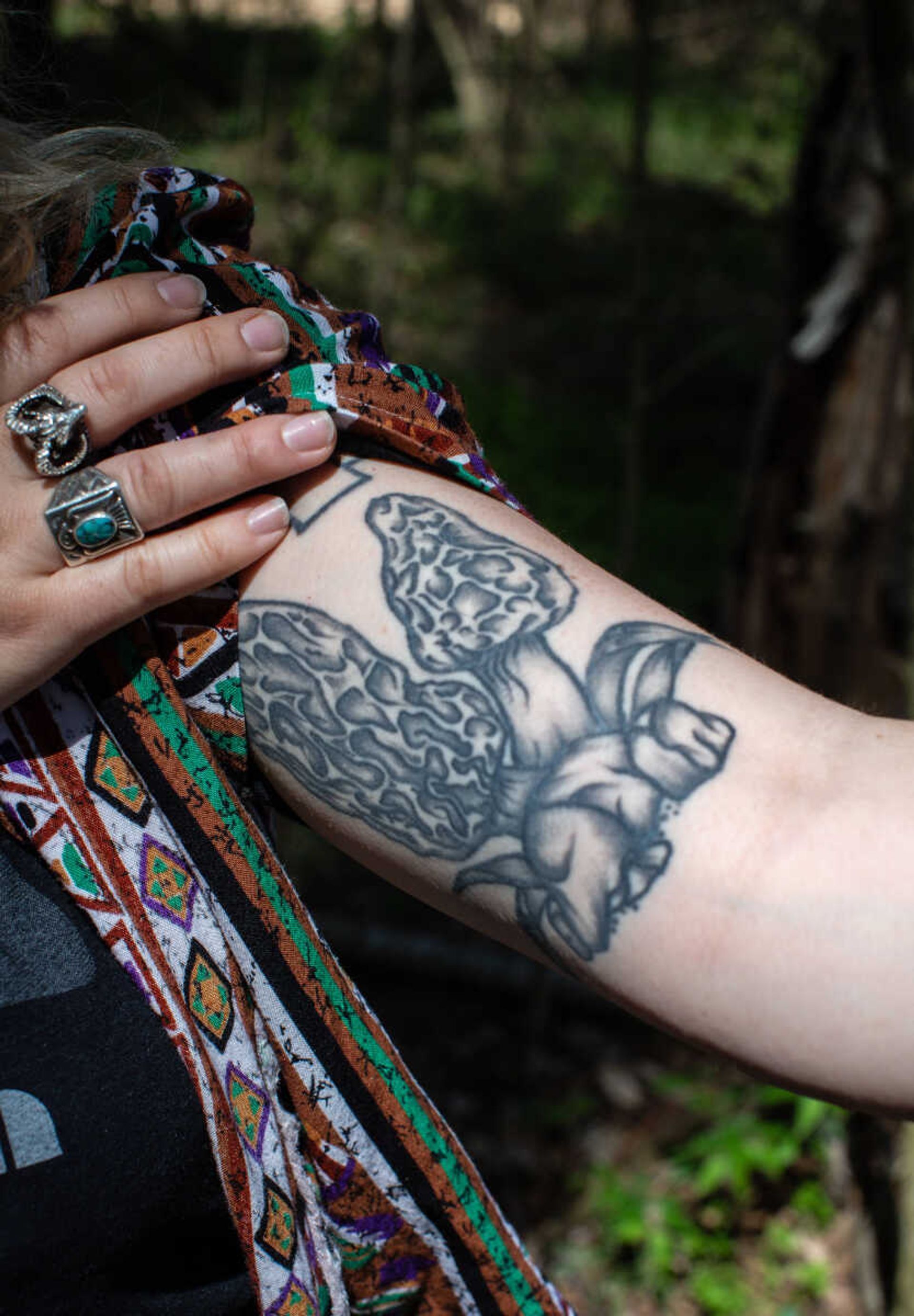
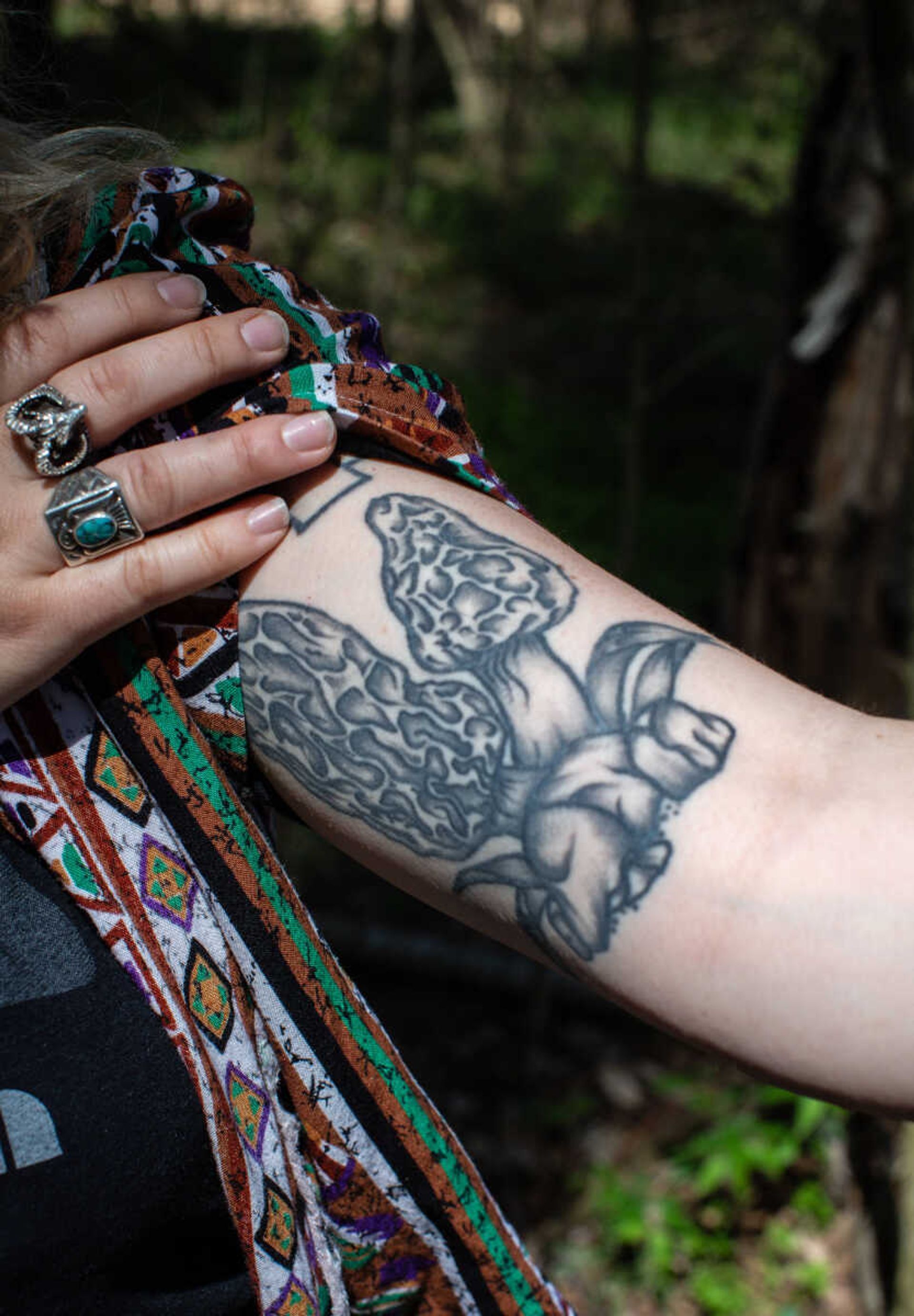
__The danger of the false morel__
It is important to actually know what you’re doing, though, Fox says, so as not to pick a poisonous false morel. False morels, such as the big red morel and gabled false morel that grow in Missouri, may be black, gray, white, brown or reddish. They often have wrinkly lobes, folds or flaps on their caps that protrude outward, rather than pits and ridges in the caps like true morels, according to the Missouri Department of Conservation. In addition, true morels are found only in the spring; false morels may be found year-round.
Perhaps the most fail-proof way to determine if a morel is poisonous, however, is this: True morels are hollow in the middle, whereas false morels are chambered, not hollow, inside. Morels should always be cut open before cooking and consuming to ensure they are not poisonous.
According to the book “Missouri’s Wild Mushrooms: A Guide to hunting, identifying and cooking the state’s most common mushrooms” by Maxine Stone, the toxin in false morels, gyromitrin, is metabolized in the body to monomethylhydrazine (MMH), a chemical used in rocket fuel; the fumes from cooking false morels also contain the toxin. Reactions to false morels range from becoming sick to death; they should not be consumed.
Before hunting and eating morels, be sure to go with an experienced morel hunter who can help to identify true and false morels; the Missouri Department of Conservation also provides access to identification guides and false morel identification at mdc.mo.gov/discover-nature/field-guide/big-red-false-morel and to professional mycologists who can be contacted to aid in mushroom identification at momyco.org/about-us/our-experts.
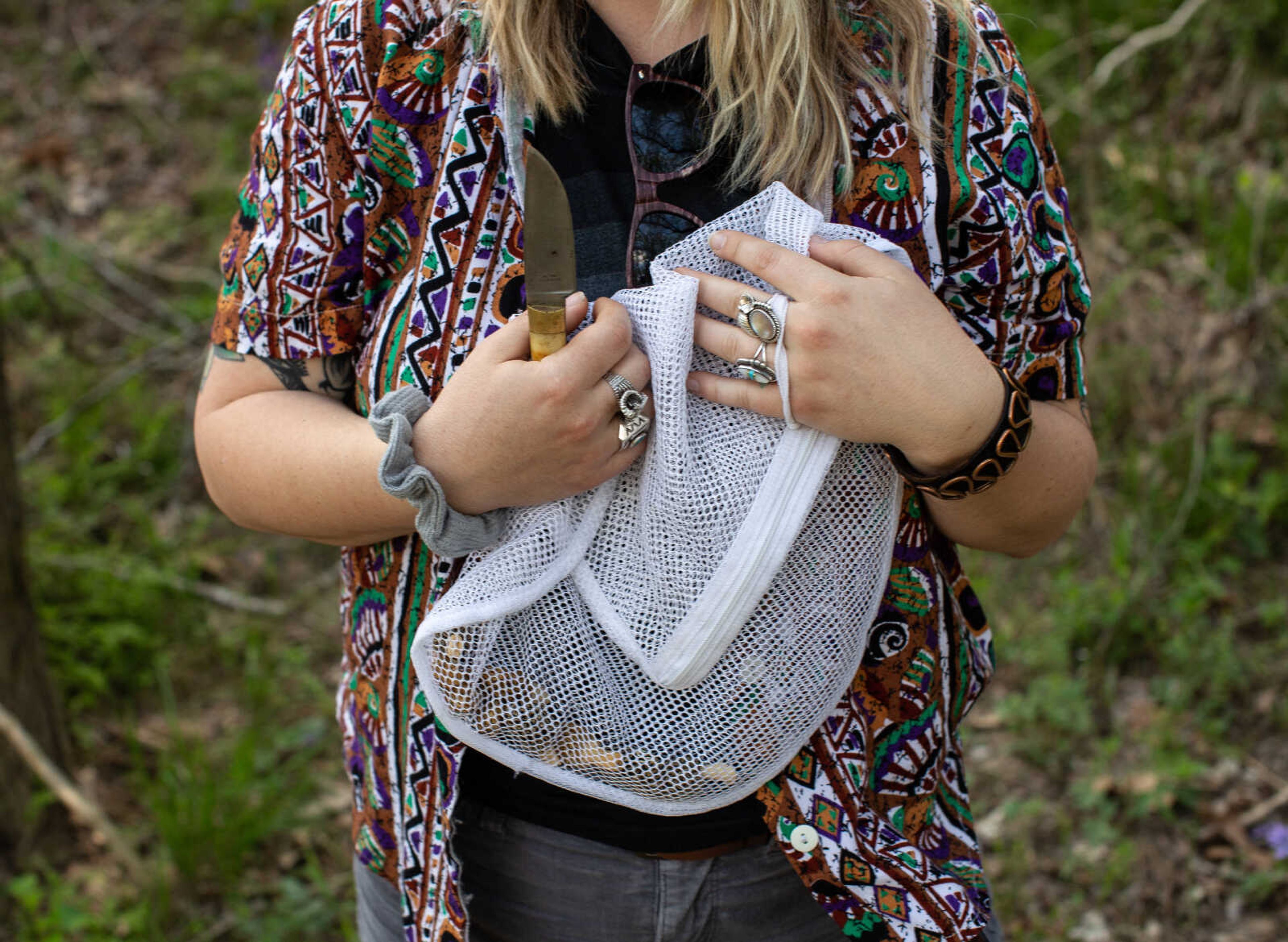
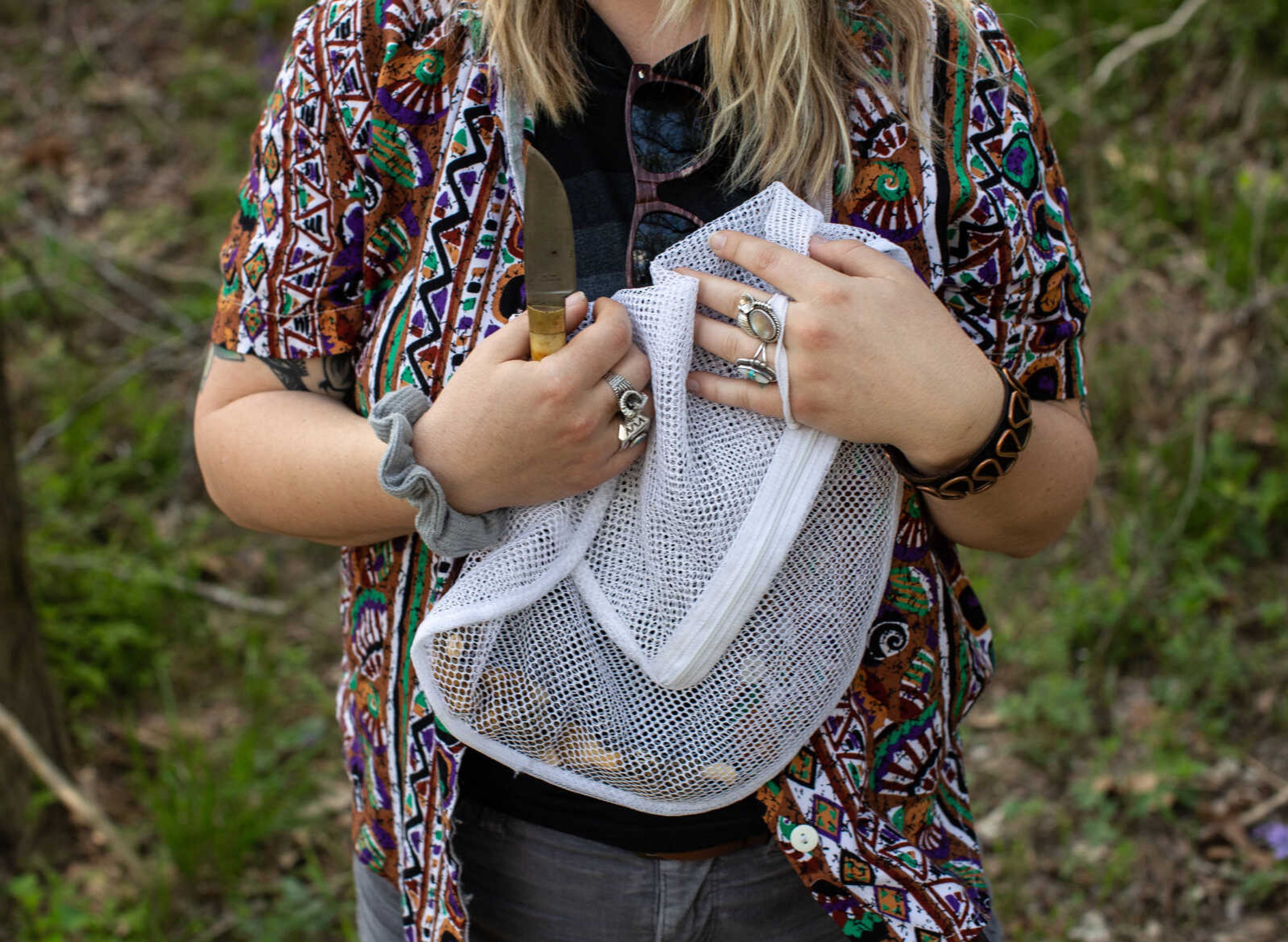
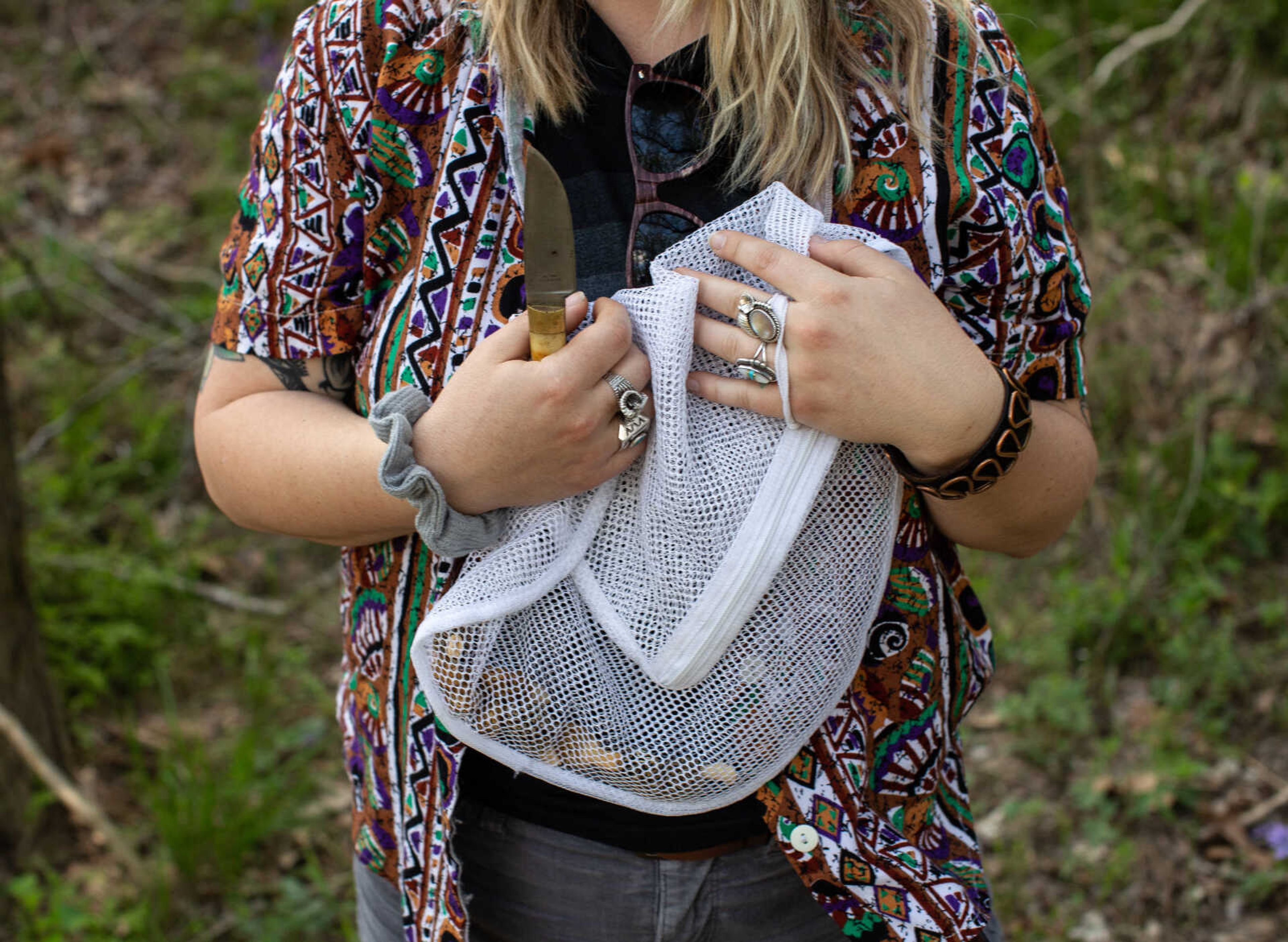
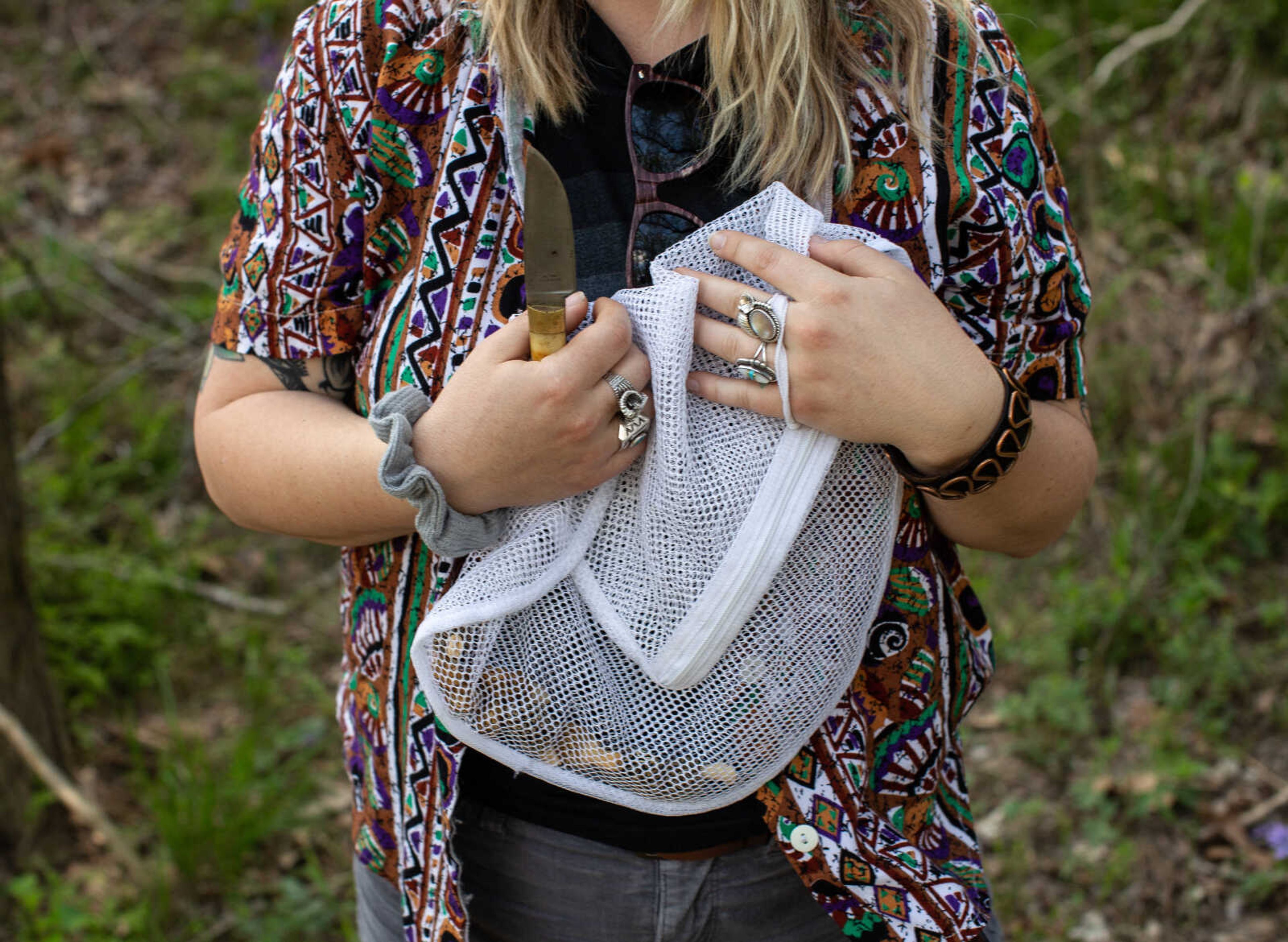
__Cooking with true morels__
Although it’s important to steer clear of false morels, true morels are considered a delicacy. DeWayne Schaaf, Celebrations chef and owner, loves to make morels with seafood, specifically scallops, lobster and shrimp, or any light food that won’t overpower the delicate flavor of the fungi. His other ideas for cooking with morels include making them with linguine and spinach; including them in a dish with game like quail or pheasant; or sautéing them with spring vegetables like asparagus and spring onions, along with white wine and butter or cream, and eating this over bread.
“There’s kind of a richness, but it’s not overpowering,” Schaaf says. “Morels have more of a delicate earthiness that I think is just beautiful.”
When cooking with morels, Schaaf says to watch out for bugs; rinsing the morels thoroughly with water before cooking should take care of that.
Beyond that, he says to enjoy the simplicity of what the earth offers up.
“Enjoy the fact that we get to go out and find wild things that are delicious to eat, and that the seasons allow us to do that,” Schaaf says.
One of the aspects that adds to the popularity of morels is their versatility: Zembsch, who describes the flavor as “nutty,” says she sautés morels with butter and cayenne pepper, as well as fries them. She’s also put them in homemade ramen and Cajun pasta. Fox says he and his family like to eat them fried in butter or olive oil, and they also freeze them to eat throughout the year.
But the bounty of the hunt is not so much the point of it all as the process is, Fox says. And the process can be one of persistence and elusivity, which makes a successful morel hunt that much more rewarding.
“You really just need to get out and do a lot of walking and looking,” Fox says. “All [of the advice on the internet] is conflicting, because that’s the nature of the whole thing: They just pop up where they feel like popping up. Every year is different.”
Connect with the Southeast Missourian Newsroom:
For corrections to this story or other insights for the editor, click here. To submit a letter to the editor, click here. To learn about the Southeast Missourian’s AI Policy, click here.


